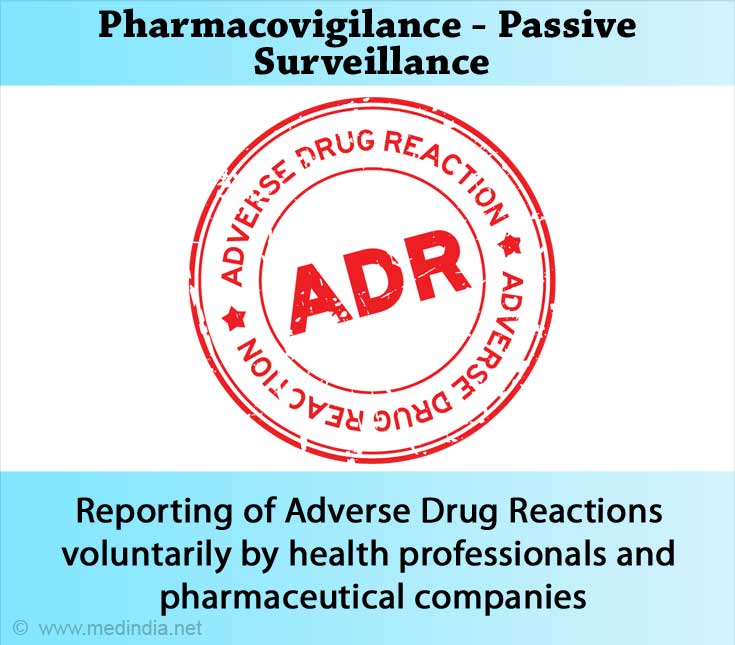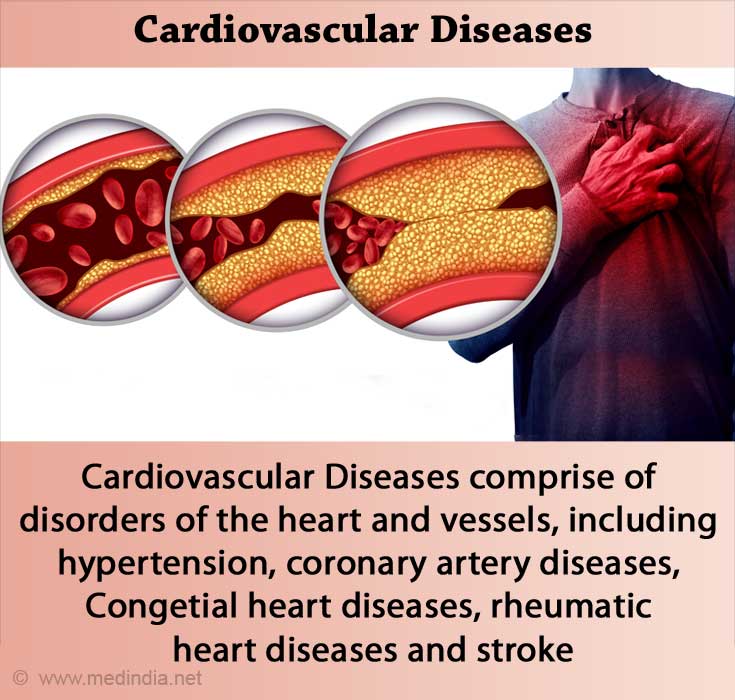- Methods in Pharmacovigilance - (https://isoponline.org/wp-content/uploads/2015/09/21052015_Methods-in-PhV.pdf)
- SKS Methods in Pharmacovigilance - (https://www.glocaluniversity.edu.in/files/eContent/eBpharm/SKS%20Methods%20in%20Pharmacovigilance.pdf)
- Adverse drug reactions vs side effects - http://www.myhealth.gov.my/en/adverse-drug-reactions-vs-side-effects/) - (https://www.glocaluniversity.edu.in/files/eContent/eBpharm/SKS%20Methods%20in%20Pharmacovigilance.pdf)
- Adverse Drug Events, Adverse Drug Reactions and Medication Errors - (https://www.pbm.va.gov/PBM/vacenterformedicationsafety/tools/AdverseDrugReaction.pdf)
- Pharmacovigilance in the age of COVID-19 - (https://uppsalareports.org/articles/pharmacovigilance-in-the-age-of-covid-19/)
- PHARMACOVIGILANCE SYSTEM IN WORLD - (https://www.pharmatutor.org/articles/pharmacovigilance-system-world)
- SUSPECTED ADVERSE DRUG REACTION REPORTING FORM - (https://cdsco.gov.in/opencms/export/sites/CDSCO_WEB/Pdf-documents/Consumer_Section_PDFs/ADRRF_2.pdf)
- Possible Side Effects After Getting a COVID-19 Vaccine - (https://www.cdc.gov/coronavirus/2019-ncov/vaccines/expect/after.html)
- Pharmacovigilance Process in India: An overview - (https://www.longdom.org/open-access/ppharmacovigilance-process-in-india-an-overviewp-2329-6887-1000259.pdf)
What is Pharmacovigilance?
Pharmacovigilance is relates to the detection, assessment, understanding, and prevention of adverse effects or any drug-related problem for patient safety.
Post-marketing drug surveillance (keeping a tab on the adverse effects after it is launched in the market) is the heart of Pharmacovigilance. It enables effective long-term monitoring to ensure safety of drugs.
What is the difference between Drug-related Side effects and Adverse effects?
Most of the terms related to the effects of medications are used interchangeably, but there are some unique differences among them. It is essential to understand these terms clearly to get clarity about drug-related issues.
- Side effects of a drug are the unintended effects that occur when you take the standard dose of a medication. They are usually related to the way the medicine works and therefore can sometimes be expected to occur. Example antibiotics can alter the good bacteria in the intestine and cause gastric side effects.
- Adverse effects or adverse events of a drug are the harmful effects that occur unexpectedly while taking the normal dose of a medication. They are not related to a drug's action, so they may or may not have any relationship with the treatment.
- There is another term called Suspected Adverse Drug Reaction (ADR). When your physician believes that there is a possibility of a relationship between the adverse event and the medication you take, then the adverse event becomes a suspected adverse drug reaction.
What Are the Methods in Pharmacovigilance?
There are four important methods in Pharmacovigilance such as,
- Passive surveillance
- Active surveillance
- Cohort event monitoring
- Targeted Clinical Investigations
(i) Passive Surveillance
Passive surveillance methods involve the usage of spontaneous adverse event reports voluntarily sent by healthcare professionals or patients to the marketing authorization holder or regulatory authority. Here, data related to the adverse reactions are collected in a central or regional database. The identity of the reporter remains anonymous, but patient-related details like country, age, gender, and pre-existing co-morbidities can be recovered from the reporting forms.
Examples of spontaneous reporting systems include the –
- FAERS (FDA Adverse Event Reporting System) database run by FDA
- VigiBase™, the WHO Global Individual Case Safety Report (ICSR) database
- For Europe:EudraVigilance maintained by European Medicines Agency
- Currently, there are no specific spontaneous reporting systems available for India. (Selected eligible medical colleges, hospitals, and centers were approved as ADR Monitoring Centers. They collect the Individual Case Safety Reports (ICSRs), analyze them, and report them to regulatory the authority. The technical associate from Medical Sciences, Banaras Hindu University is also an authorized person for collecting ICSRs along with its follow up and online database entry in Vigi-Flow software).

(ii) Active Surveillance
This method aims to monitor certain specific drug-related adverse events and seeks to ascertain the number of adverse drug reactions entirely through a pre-planned process. It is commonly known as toxicity monitoring or safety monitoring.
(iii) Cohort Event Monitoring
In this method, the surveillance study is planned prior to beginning the treatment with the medication. A group of people are exposed to a drug for a defined period and actively followed up during treatment.
Adverse events of the target drug or the events associated with one or more medicines taken with that drug are monitored.
(iv) Targeted Clinical Investigations
These kinds of investigations are performed to identify and characterize the adverse reactions related to a drug among special populations like people with some genetic disorders, pregnant women, and older people.
What are the steps involved in the adverse event case processing?
The workflow of pharmacovigilance case processing involves three key steps:
- Data management
- Assessment of the relationship between the drug and ADR
- Timely reporting to all concerned parties and regulatory authorities
(i) Data Management
The data management includes collecting ADR reports, verifying and organizing relevant details from the report, and assignment of specific International codes to ADR and drug names.
(ii) Assessment of the Relationship Between Drug and ADR
This step involves deriving a link between the suspected ADR and the suspected drug. Resources such as patient details, findings from the existing scientific literature, and results from the laboratory tests are used in this process.
(iii) Timely Reporting to all Concerned Parties and Regulatory Authorities
This is the end goal of using pharmacovigilance systems. Experts use many kinds of statistical measures to check whether a drug had created a considerable number of ADR cases. Once it is found that a significant number of ADR cases are reported for a drug, timely reporting to all the concerned parties and regulatory authorities is made by the professionals.
Why is Pharmacovigilance Important?
COVID-19 pandemic has taught us the importance of Pharmacovigilance.
Several drugs with potential anti-viral and properties, including remdesivir, hydroxychloroquine, and lopinavir/ritonavir are being repurposed for COVID-19. In the midst of this complex and urgent activity, pharmacovigilance plays a vital role as the reports of suspected adverse drug reactions related to some of these older medications are recorded in adverse event reporting systems.

So, why do we need this kind of surveillance system if the drugs are tested for safety before approval?
Most new drugs are approved after a few thousand patients are exposed to them. In some cases, the number studied in pre-approval trials may be much smaller, and during this phase, a drug is tested for its efficacy and only the most common adverse effects are noted and a warning is included.
However once it comes in the market a relatively large number of people will receive the drug and some may have comorbid conditions (including medically serious conditions) or have a broader spectrum of disease severity, others may be taking more than one drug or may be use the product for unstudied (off-label) uses. Thus, people who use a drug in real-world setting differs from those highly selected individuals included in clinical trials.
Here comes the importance of post-marketing drug safety surveillance. To summarize, the role of a pharmacovigilance program is to discover previously unidentified or insufficiently understood adverse drug reactions that could not have been identified in the pre-approval period. These reactions can occur due to any of the following reasons:
- Unrecognized pharmacological effects of the drug
- Drug-drug interactions
- Drug-food interactions
- Drug-disease interactions
- Factors related to specific patient populations
- Individual patient factors
- Medication errors
An ideal post-marketing safety surveillance system helps quantify the risk of the adverse reaction in a population treated with the drug, take appropriate regulatory action to prevent or minimize risk, and communicate these findings to healthcare professionals and patients.
Pharmacovigilance across the Globe
Every country has its own pharmacovigilance system based on WHO guidelines. Let us see how some countries maintain their Pharmacovigilance systems.
(i) Europe
In Europe, the European Medicines Agency (EMA) coordinates and maintains the pharmacovigilance database called EudraVigilance, which contains the records of all the suspected adverse drug reactions. It also includes a separate database for veterinary adverse drug reactions.
(ii) United States
The United States uses a multi-faceted approach to maintain pharmacovigilance systems that include FDA, the pharmaceutical manufacturers, academic/non-profit organizations, and public citizens. Case reports related to adverse drug reactions are collected and managed by the US FDA.
(iii) India
In 2004, the Central Drugs Standard Control Organization (CDSCO), along with the Ministry of Health and Family Welfare, Govt. of India, launched the National Pharmacovigilance Programme (NPP) based on the WHO recommendations. The pharmacovigilance system is maintained by dividing the whole country into zones and regions.












